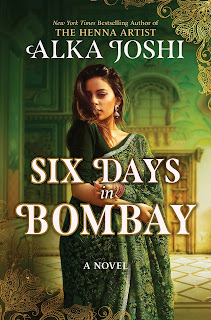Find the answers in Captain Wentworth in His Own Words. Catch a glimpse of his difficult childhood, and learn how he ended up in the Navy so young. Witness his first meeting with Anne, their falling in love, and tragic parting. Sail along on his daring adventures at sea. Before he meets Anne again, Captain Wentworth has travelled the globe. He’s risen to riches and respect. Yet, he’s still missing the one thing needed to crown all his other success: the woman he’s never stopped loving.
This is not a variation from but a supplement to the original story of Persuasion, chronicled in Wentworth’s point of view. It’s a behind-the-scenes look at the things Jane Austen didn’t tell us about one of her most iconic heroes.
As mentioned in the review of The Persuasion of Miss Jane Austen, my favorite work of our dearly departed Jane is her Pride and Prejudice. However, coming in a close second is the posthumous Persuasion. In The Persuasion of Miss Jane Austen, I greatly enjoyed author Shannon Winslow’s blending of the fictional Persuasion with the actual history of Austen. Winslow’s 2014 novel remains one of the few titles kept in my permanent collection following a book review.
Winslow’s latest work again sets its sights on Austen’s tale of unrequited love in Captain Wentworth in His Own Words. This time however, she follows the pattern of the other titles of her “In His Words” series and expands upon the original characters in Persuasion. Readers are given the opportunity to hear directly from the mind and heart of Captain Wentworth, a Navy man who has never forgotten a young woman named Anne Elliot. In the original Austen novel, the journey on which Captain Wentworth and Anne embark is a tantalizing one, culminating in the happily-ever-after that so many Janeites relish. However, readers could easily enjoy more details from these characters’ pasts. Captain Wentworth in His Own Words delivers this in spades.
As Shannon Winslow takes her readers into the youth of Frederick Wentworth, she illustrates how he came to be the sort of man he was. Winslow does not change the facts that Austen presented for this character, but she expounds upon them and adds more historical detail. The Wentworth family has secrets and travails which have shaped Frederick and influenced his path. The Captain is indeed an honorable man, but his journey to that position was not always a level one. He experiences pain on multiple fronts, and the lessons he learns from the events and individuals around him bring him into manhood.
That said, even as an adult Captain Wentworth still has much to grasp about the human condition, such as the “crucial difference between steadiness of principle and the obstinacy of self-will.” Through his interactions with family and friends as he spends time on shore, he begins to see growth in this area. This becomes particularly clear as he is given another opportunity to interact with Anne Elliot, the woman he fell in love with years before.
Hurt by Anne’s prior rejection of him, he at first feels compelled to stubbornly maintain a certain aloofness with her. Should she feel a modicum of the pain he felt when she backed out of their prior engagement, so much the better. His principles and pride would shield him from further grief as well, or so he thought. However, through their renewed acquaintance and unexpected events, they begin to work their way back to each other, as Austen so beautifully wrote. Readers of Captain Wentworth in His Own Words are given a new, fuller perspective on this journey. Winslow’s depiction of the fine workings of this process were very true to the tone of Austen and honored the source material entirely. Fans of Persuasion will certainly find much to enjoy.
As is the case with all of Shannon Winslow’s work, the content of Captain Wentworth in His Own Words is appropriate for most ages. The Captain does experience some exciting moments at sea, some of which involve a bit of violence, death, and a few minor colorful words. While the nautical details were quite realistic to the setting, Winslow was careful to tone down the saltiness of life onboard a Navy ship for the sake of her audience. This also included moments of romance, even between married individuals. I would certainly feel comfortable recommending this title to the general public.
Although the ultimate conclusion and the fates of the characters remain the same as Persuasion, the added context within Captain Wentworth in His Own Words brings increased value to the story. Revisiting Jane Austen’s world in this beloved tale with the perspective of the mind of Captain Wentworth was very enjoyable. This makes a fine addition to author Shannon Winslow’s series and continues her success as an Austenesque author.




























